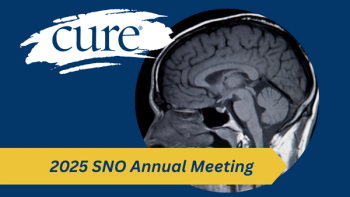Disease-free survival (DFS; time after diagnosis during which a person shows no signs of the disease returning) was not improved when adjuvant (post-surgery) Imfinzi (durvalumab) was given after complete tumor removal and optional chemotherapy versus placebo for patients with EGFR- or ALK-negative non-small cell lung cancer (NSCLC) across PD-L1 positive (protein that helps cancer cells hide from immune system) subgroups, according to results from the phase 3 trial presented at the 2024 European Society of Medical Oncology Congress.
The median DFS in patients with PD-L1 expression of 25% or more in the Imfinzi arm was 69.9 months versus 60.2 months in the placebo arm. The 18-month DFS rate in the Imfinzi arm was 75.1% versus 70.5% in the placebo arm. The 24-month rate was 71.2% versus 68.5% and the 36-month rate was 63.9% versus 62.4%.
Study Highlights:
- While Imfinzi showed some benefit in specific subgroups, it did not significantly improve overall disease-free survival for patients with NSCLC.
- The study found that patients with higher levels of PD-L1 expression seemed to benefit more from Imfinzi. However, the effect was not consistent across all subgroups.
- The researchers suggest that the timing of Imfinzi treatment in relation to surgery (perioperative approach) may be crucial for its effectiveness.
- While the overall benefit was limited, Imfinzi might still be a valuable option for some patients with NSCLC, especially those with high PD-L1 expression and specific clinical characteristics.
- Further studies are necessary to understand the optimal use of Imfinzi in the treatment of NSCLC and to identify the patients who are most likely to benefit.
The median DFS in patients with PD-L1 expression of 1% or more was 59.9 months in the Imfinzi arm and 60.3 months in the placebo arm. The 18-month DFS rates were 73.4% versus 70.1%; 24-month rates were 68.6% versus 67.0%; and 36-month rates were 60.2% versus 60.1%, in the Imfinzi and placebo arm, respectively.
For patients with NSCLC, regardless of their PD-L1 status, the median DFS was 60 months in the Imfinzi arm and 53.9 months in the placebo arm. The DFS rates at 18 months were 72.1% versus 66.0%; at 24 months, they were 67.4% versus 63.3%; and at 36 months, they were 60.4% versus 56.4%.
“The outcomes of the BR.31 study suggest that the presence of primary disease and associated tumor antigens [unique proteins on cancer cells that the immune system can attack], as in the perioperative approach [the time before, during, and after surgery], may be required for optimal efficacy [in NSCLC],” Glenwood Goss, a professor of medicine in the University of Ottawa Division of Medical Oncology, a chair of the Thoracic Oncology Site Committee and director of Clinical and Translational Research at Ottawa Hospital Cancer Centre, said in a presentation on these data.
Patients with stage 1B to 3A NSCLC who had complete resection (tumor removal), an ECOG performance status of 0 to 1 (patients were limited in strenuous activity but could perform daily tasks) and EGFR-mutated/ALK-positive disease were eligible to enroll. Patients received a platinum doublet followed by surgery and randomization at three weeks or more. Patients were randomly assigned two-to-one to Imfinzi at 20 mg/kg every four weeks for 12 months or matched placebo.
The primary focus was investigator-assessed (examined by a healthcare professional) DFS in patients with PD-L1 expression of 25% or more and EGFR- or ALK-negative disease. Secondary end points included DFS in patients who had PD-L1 expression of 1% or more and EGFR- or ALK-negative disease, all patients with PD-L1 expression of 25% or more, all randomly assigned patients, PD-L1 all comers (all levels of PD-L1 protein) with EGFR- or ALK-negative disease, and all patients with PD-L1 expression of 1% or more; overall survival (the time from the start of treatment when a patient with cancer is still alive); side effects; and quality of life (person's overall well-being, including physical, emotional, social and spiritual aspects).
Overall, 1,827 patients registered, with randomization of 1,415 taking place between February 2015 and March 2020. There was a total of 1,219 patients with EGFR- or ALK-negative disease. Of the 1,415 patients who were randomly assigned, 944 and 471 were assigned to the Imfinzi arm and the placebo arm, respectively. At data cutoff, 67.7% of patients in the Imfinzi arm and 67.5% in the placebo arm were still receiving study treatment.
In the PD-L1 expression of 25% or more group, the median age was 65 years versus 63 years in the Imfinzi versus placebo arms, 61.1% versus 64.6% were male, 47.5% versus 41% were White, and 81.6% versus 79.5% were former smokers. Additionally, the most common histology type was adenocarcinoma in 63% versus 59%, 54.4% versus 50.9% had stage 2 disease and 65.8% versus 64.6% had PD-L1 expression of 50% or more.
In the PD-L1 expression of 1% or more group, the median age was 65 years versus 63 years in the Imfinzi and placebo arms, with 62.5% versus 64.6% being male, 46.1% versus 42.1% were White, and 78.3% versus 77.5% were former smokers. The most common histology type was adenocarcinoma (cancer found in glandular cells located across multiple organs) in 60.8% versus 58.8%, and 44.3% versus 43.3% had PD-L1 expression of 50% or more.
In the PD-L1 all-comers group, the median age was 64 years versus 64 years in each arm, respectively; 64.8% versus 66.8% were male, 46.1% versus 46.5% were White and 78.4% versus 76.5% were formers smokers. The most common histology type was adenocarcinoma in 66.3% versus 60.6%, and 42.5% versus 40.6% had PD-L1 expression of less than 1%.
The safety analysis included all patients who had received at least one dose of treatment. Any kind of side effects occurred in 93.8% in the Imfinzi arm and 92.3% in the placebo arm. Grade 3/4 (severe/life-threatening) side effects occurred in 23.5% versus 19.6%, and side effects leading to death occurred in 0.7% versus 0.2% between either arm. Serious side effects were observed in 18.8% versus 15.4%, and side effects leading to discontinuation occurred in 14% versus 5.1% in the Imfinzi and placebo arms, respectively.
For more news on cancer updates, research and education, don’t forget to subscribe to CURE®’s newsletters here.






